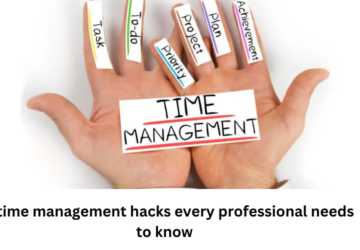IoT is a broad term that typically refers to any device or combination of devices, components, and technologies that enable data sharing, collecting, and analysis over the Internet.
While these devices have many applications in the construction industry – from remote asset monitoring to managing equipment – it’s not clear which IoT capabilities will prove the most valuable over time.
In simple terms, there are three main functions of IoT systems:
- Sensing (gathering data)
- Computing (analyzing the data)
- Connectivity (delivering information)
Because these functions overlap so much, they can be combined in various ways depending on what a particular company needs.
Construction professionals today use a wide range of tools to gather information relevant to their jobs. They walk building sites, drive vehicles and operate machinery, capture digital images of construction activities and conditions, run computer simulations and conduct desk-based research to understand how things work or were supposed to work.
At the same time, they produce loads of data – measurements taken every day on-site, analyses developed by engineers and architects working in offices far from where the actual building is underway – that stays offline until someone goes through the trouble of digging it up.
Many companies, like JDE Support, have created applications to connect all this information for specific purposes:
- Project management
- Design review
- Risk management
The idea with many of these apps is that by sharing data across different business units, everyone can contribute to a more accurate picture of what’s going on at any given time.
In recent years, companies have gone a step further and started experimenting with IoT tools that can automatically perform these functions or autonomously.
Initially, the prominent examples of this kind of device were machines such as backhoes and bulldozers, tractors, and cranes – things people no longer needed to operate manually because they were too complicated or dangerous.
Today we also see connected devices in places where humans used to walk – crawling across an uneven surface to take measurements – or collect information using their eyes: taking high-resolution digital images at regular intervals.
As technology advances and becomes more affordable, it will be possible to install IoT sensors all over construction sites – on equipment, machinery, site offices, and temporary structures; inside buildings; along roads; and at critical points along property lines or excavation areas.
If we can capture more of this data and put it to use, the benefits could include:
Shorter construction timeframes
Construction is a lengthy process – often involving several parts of a building over different periods – and any chance to shorten the overall timeline will benefit everyone involved. Better risk management can help draw more accurate conclusions about how design changes might impact safety and determine whether they’re achievable within the required timeframe.
Construction companies stand to gain from planning more effectively and keeping their resources engaged for less time with each project. That means they’ll have those resources available for another job sooner rather than later, which is good news for subcontractors and suppliers as well.
It’s also worth noting that drones and robots can be used to speed things up by enabling staff to cover more ground in less time, flying over a site or crawling around to take measurements instead of walking.
More accurate costs and schedules
With the right technology in place, we could start using IoT tools for real-time monitoring and predictive analysis – something that would allow for better, more accurate cost projections and shorter construction timetables.
Today most companies rely on hourly rate agreements with subcontractors, who might change those rates depending on how many hours they end up putting into a project after they’ve submitted their invoices each month and received payment.
The problem is that the amount of time they admit to spending doesn’t always turn out to be accurate, but it’s their best guess. One way around this is to pay them for their actual hours worked instead of an agreed-upon rate, which can get more expensive in a hurry depending on how many of these transactions need to take place.
Instead, construction companies could monitor where subcontractors are and what they’re doing on-site at any given time by using IoT applications that record data from connected devices.
This will give them the ability not only to track progress in real-time but also to make smarter decisions based on more accurate information about when tasks should be completed and how much they might cost (if one worker tells management he can finish framing ten houses per month, but he’s only able to complete five with the materials and equipment available on-site at any given time, the company will know they need more resources).
More precise safety management
Safety practices across construction sites are still highly variable, so there is room for improvement in this area as well. Some companies have moved toward using drones to do an initial survey of construction sites and worksites after accidents occur – flying over the area where someone fell from a scaffold or was struck by falling debris.
For example, collecting data that might help them prevent similar accidents from happening again down the road.
Other potential enhancements include attaching sensors to tools like drills and circular saws to monitor how much time each person spends using them in a given day. This will also help cut down on accidents by alerting managers when someone is taking too long with a tool that could cause injury if used for too long at one stretch or in one location.
In addition, sensors placed throughout the site will detect the presence of certain chemical elements in the air and provide alerts in cases where exposure levels are dangerously high. And this same technology can also be used to monitor noise levels and ensure they never get too high for workers’ well-being or potentially interfere with their ability to communicate or hear warning signals of danger nearby.
There is great potential for IoT tools to make construction risk management more accurate, precise, and efficient across all phases of design and construction. With these insights, it’s clear there are many benefits to be had.








